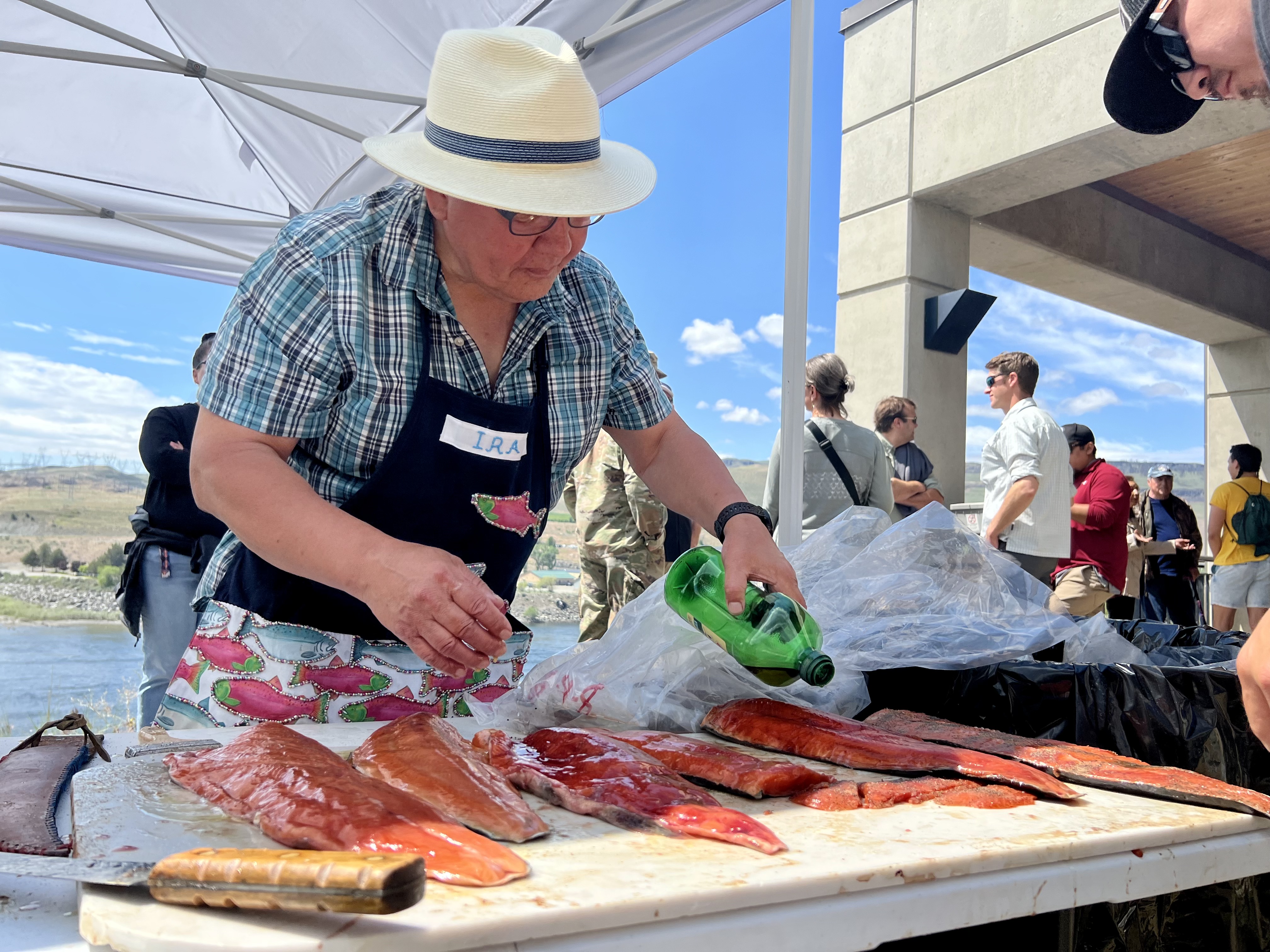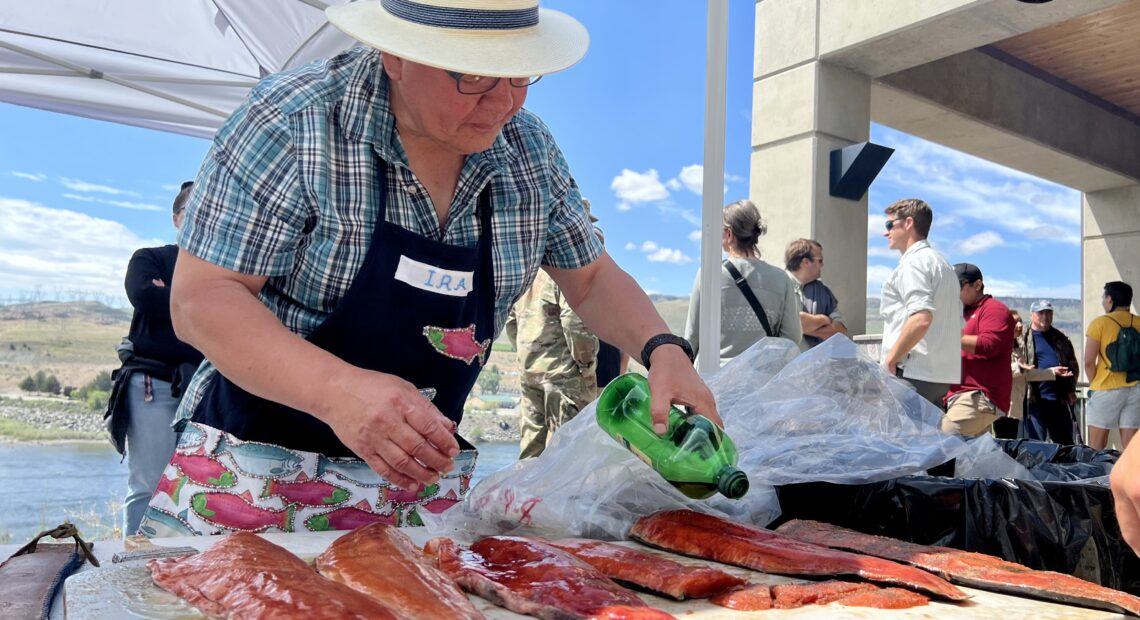
For tribes, welcoming salmon to the Upper Columbia is a reminder of ‘lifelong work’
Listen
(Runtime 4:04)
Read
The sun just started to rise over the Columbia River in Bridgeport, Washington, when a Colville fisherman caught the first salmon of the season.
“Every year we acknowledge our First Foods, and it’s like a pay-it-forward process,” said Darnell Sam, the Salmon Chief and a member of the Sn’ps’quosa tribe, which is part of the Colville Confederated Tribes.
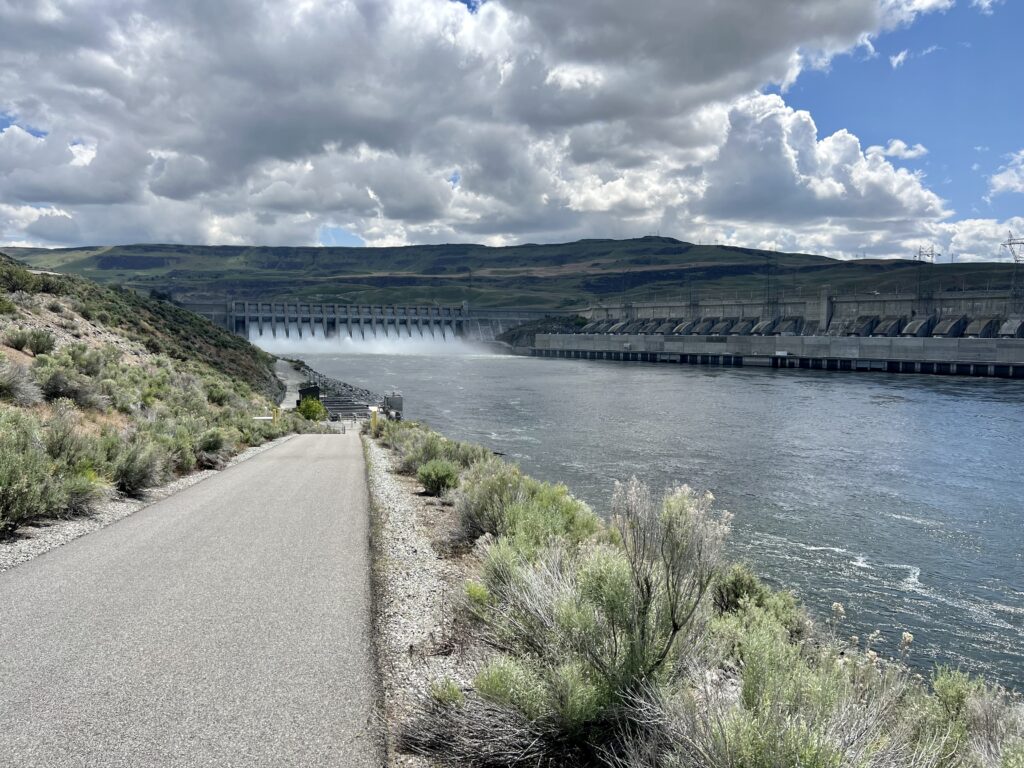
Chief Joseph Dam is the first dam that blocks salmon’s passage into the Upper Columbia River. (Credit: Courtney Flatt / NW News Network)
Tribal members fileted the fish and returned part of its body to the water during an annual First Salmon ceremony.
“We always think about the future when we think about our foods. We give thanks for that food, and we continue to ask for that food for the future to come,” Sam said.
The tribes are worried about what that future might look like.
Young salmon migrate to the ocean, where they grow strong and large. This time of the year, a lot of them try to come back to the Upper Columbia River to spawn. But Sam said they can’t return to their historic spawning grounds because of the Chief Joseph Dam.
“Chief Joseph Dam here — named after one of our chiefs — essentially this is as far as the salmon can come on the Columbia. Anything above there is considered a blocked area,” he said.
Concrete dams have blocked salmon’s historic migration pattern for about a century. Fish biologists say that’s been devastating for salmon populations in the Northwest. Combined with warming waters and low water flow from climate change, some salmon runs are at risk of extinction.
“There’s all kinds of documentation in the past that when the salmon would come, [tribes] would literally feast for five days,” Sam said.
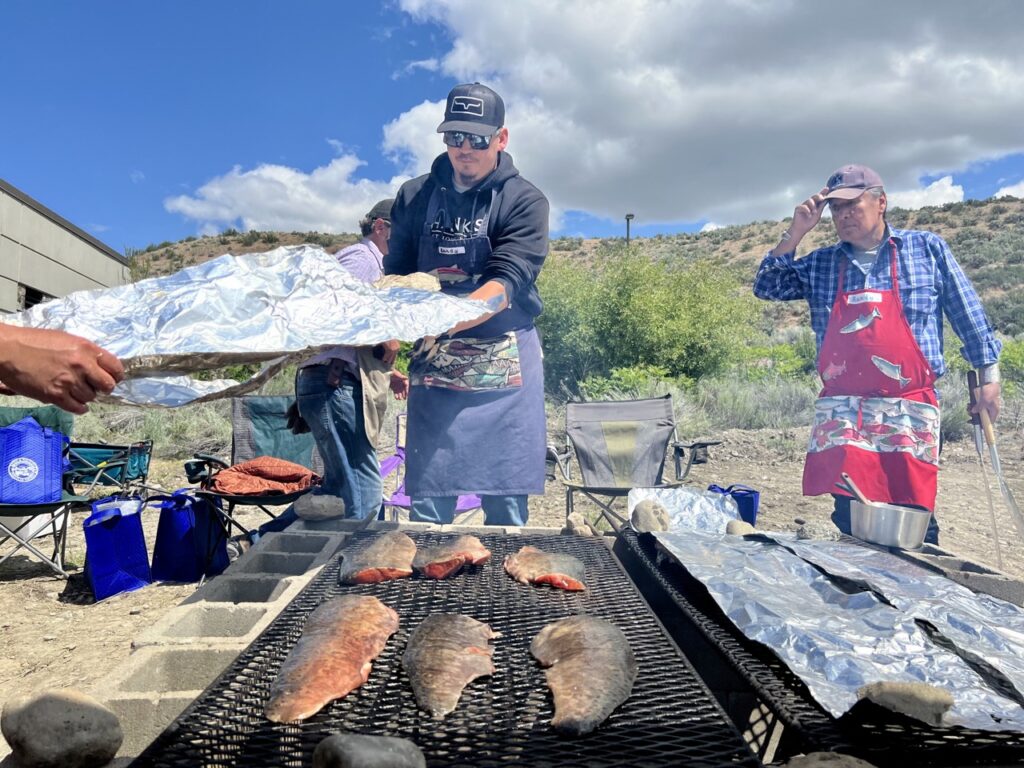
Paul Myrick helps cover salmon filets in foil. While not the traditional way to cook salmon, it helps the fish cook faster. (Credit: Courtney Flatt / NW News Network)
Some dams have fish ladders to help adult salmon upstream, but Chief Joseph doesn’t have one, and neither does the nearby Grand Coulee Dam.
Both are important power producers for the region. But there’s also no way for young salmon to get around the hydroelectric turbines as they head out to the ocean.
“And with climate change and the river warming up and some of these different issues going on, it’s important for us to get those salmon back above Chief Joe and Grand Coulee and into the waters up into Canada, where there’s still pristine habitat and cooler water. And it’s home,” said DR Michel, executive director of the Upper Columbia United Tribes.
After the first salmon catch, a team of cooks basted the fish with olive oil, salt and pepper. They placed the filets on a large fire pit to bake over coals, rotating the fish when it got too hot. The cooks covered the first salmon and other frozen filets in tin foil to bake faster.
“It’s not the traditional way to cook salmon, but it’s the fast, effective way to do it,” said Colville member Mark Miller.
Randy Lewis tells an ancient, Indigenous story about how Coyote brought salmon, and how the First Salmon Ceremony came to be. (Runtime: 7:45)
While the salmon cooked, Michel said he thought of his ancestors. He said they traveled to one of the most important fishing sites in the region, known as Kettle Falls.
“My grandparents were the last ones to see fish at Kettle Falls, before [dam] construction,” Michel said, referring to the Grand Coulee Dam. “In five generations now, we’ve been without. I don’t think the tribes ever surrendered to that loss. I think in the back of our minds, we always knew one day that we would have these opportunities to correct those historic wrongs.”
That means moving fish up and over, or around, the dams. But a permanent solution – like building new fish passages – is expected to take a couple decades and cost more than a hundred million dollars.
In the meantime, the Upper Columbia United Tribes are finding other ways to reintroduce salmon to their historic habitats.
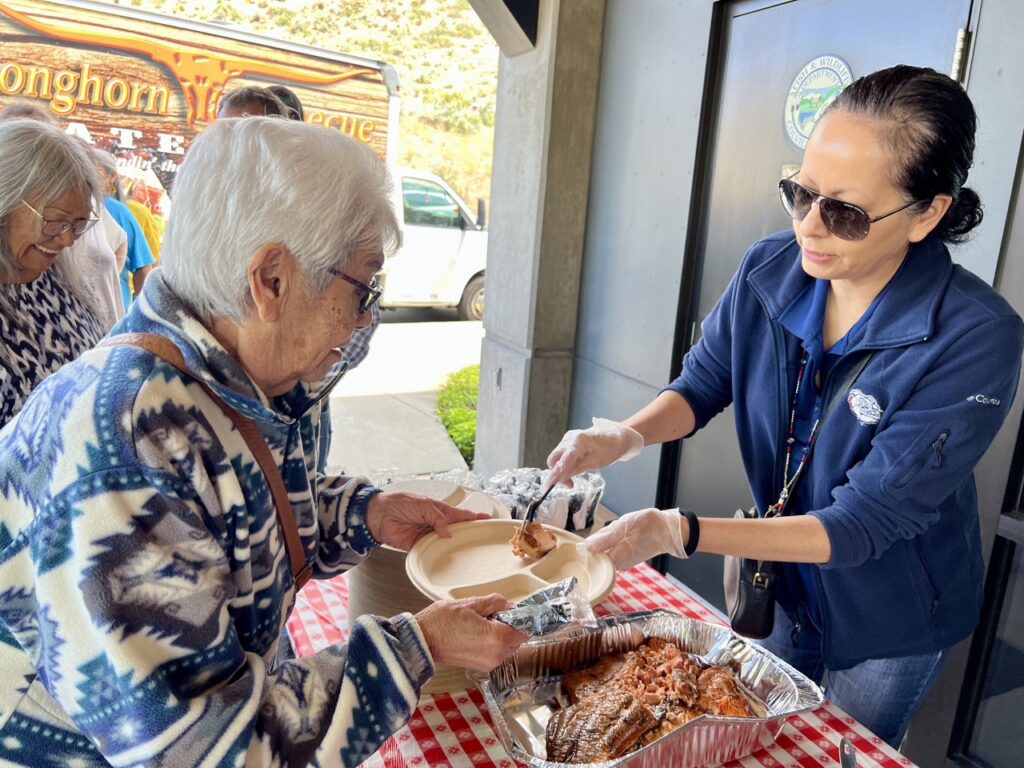
Michelle Campobasso, right, serves small chunks of the first salmon caught earlier that morning. (Credit: Courtney Flatt / NW News Network)
They’ve been releasing fish above the two dams to spawn. Michel said it seems to be working.
“You provide them the opportunity and they’ll show you where they need to go or how things should be,” Michel said. “We’ve turned fish loose above Chief Joe and Grand Coulee, and they went up. They’ve been looking for spawning grounds. They went up into Canada.”
But First Nations in Canada say there’s still a long way to go. Pauline Terbasket, executive director of the Okanagan Nation Alliance, drove across the border for the ceremony.
“It’s infinite work. It’s lifelong work,” Terbasket said. “We have horrendous challenges before us … environmentally, politically, legislatively, tribally – in terms of how we do that together.”
The salmon will come back, she says. People just have to help them.

